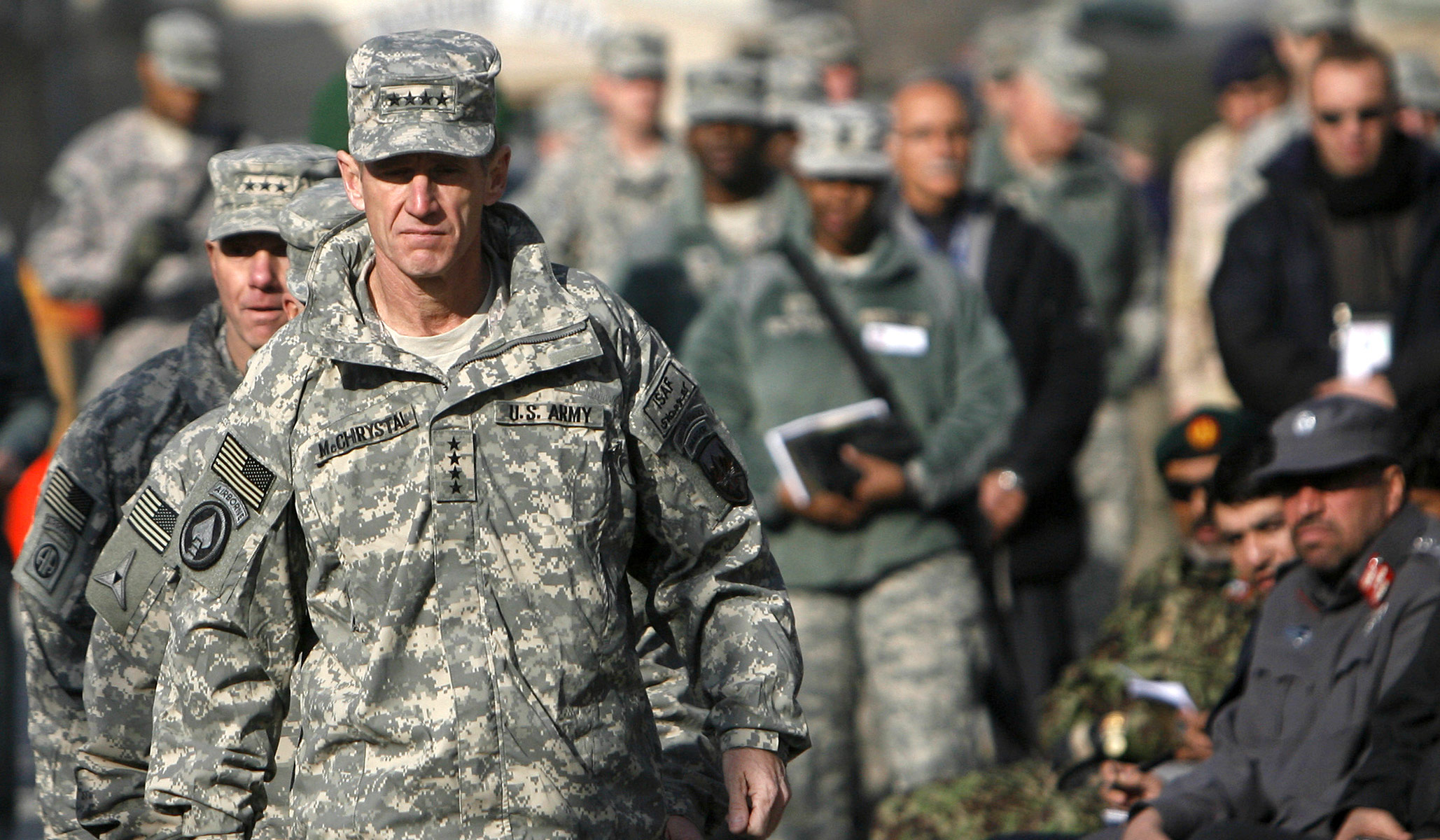
In 1950, General MacArthur took a huge strategic risk that changed the course of the Korean War, landing Marines in the rear of the North Korean soldiers and forcing them to retreat. In 2010, General McChrystal took a huge strategic risk, deploying 100,000 troops across Afghanistan in a nation-building effort that led to our humiliating defeat after 20 years. McChrystal, a multimillionaire adviser to CEOs, has recently written a book titled Risk: A User’s Guide. What does McChrystal advise about taking risk?
Risk is the possibility of something bad happening because of either human decision or an act of nature. As individuals, we decide on the degree of personal risk involved in personal decisions, such as our investments and career choices. Individuals also impose the degrees of risk upon others: A CEO risks his corporation, and a commander risks the lives of subordinates in battle. Risk is ubiquitous in human nature and life, and so the author of a book titled “Risk” should begin by defining what type of risk he is writing about.
McChrystal fails to do that explicitly. But implicitly his book seems to be a college text intended for those who aspire to be corporate CEOs or military commanders. He begins by asserting that “the greatest risk to us — is us.” He suggests that, to mitigate risk, the reader must consider ten factors, including communications, timing, technology, and adaptability. Each factor is explained in a separate chapter, illuminated by historical references, mixing the author’s personal military anecdotes with those of others.
Inter alia, he cites the War of 1812, the Charge of the Light Brigade, Desert One (the failed raid into Iran in 1980), 9/11, the Alamo, Google, COVID-19, the Korean War, the collapse of Lehman Brothers, workplace diversity, the Cuban missile crisis, Confederate statues, the 2003 invasion of Iraq, Blockbuster, Hurricane Katrina, Formula I racing, Nokia, and the Revolutionary War. Like ornaments on a Christmas tree, these examples are distributed throughout the book, which concludes with a ten-step exercise for the reader/student. At the end of the book, he concludes that leadership is the key to mitigating risk.
General McChrystal was the prime leader in the Afghanistan nation-building effort that resulted in America’s catastrophic and total withdrawal. As the commander of more than 100,000 American and NATO troops, he insisted upon a fantastical strategy. American troops would, he wrote in his memoir, “protect the people . . . from insurgent and collateral [U.S.] violence” and “from corruption and predation of the Afghans’ own government.” The “people” consisted of 8 million Pashtun tribesmen scattered in 10,000 remote villages, all hurtling headlong into the ninth century. As an embedded journalist, I found that our grunts on patrol were bewildered by what they were supposed to be accomplishing. General McChrystal, however, was unfazed by that reality. “I was asking soldiers to believe in something their ground-level experience denied them,” he wrote.
In denying the reality encountered by his own troops, McChrystal grotesquely overreached. The plain fact was that it would take decades for the Afghan military and political structures, riddled with corruption and institutionally fragile, to replace American soldiers scattered across the vast battlefield.
In 2014, President Obama pulled the plug on the massive nation-building advocated by McChrystal. By 2017, with only a few thousand U.S. troops in country and scant casualties, the U.S. military had imposed a sustainable stalemate: The Taliban held the countryside, and the government held the cities. However, that sensible small-footprint approach came too late. Two incompatible presidents, Trump and Biden, were stuck in the past, fixated on the gross overreach of the McChrystal strategy.
Yet incredibly, McChrystal in this book remains a true believer in his approach. U.S. soldiers, he writes, “sought to build roads, electrify towns and cities, aid agriculture, and assist the government in responding to the people’s needs.” He remains blind to the huge risk he ran and all that he lost by trying to do too much.
How can this be? The only hint lies in an interview he gave a few weeks ago: “I don’t think we sat around a table, ever, and talked about where’s this going to be in 20 years.” A generation of generals fought for two decades, and neither they nor the civilian officials asked where the strategy would take them! As commanding general, McChrystal could order a strategy his soldiers could not comprehend or execute, and no senior officer asked where that was leading. It is discomfiting to realize that ignoring manifest risk prevailed throughout a 20-year war.
One message from McChrystal’s book Risk is that a general personally risked nothing by losing a war. Instead, he emerged as a lavishly paid consultant to corporations, coaching them on managing risk. To judge from the book, he still does not recognize that he placed an enormously bad risk–reward bet.
The second message is that the Pentagon lacks a chief risk officer, and common sense. The McChrystal strategy of winning hearts and minds was a vast overreach, with scant chance of succeeding. Yet no Pentagon official demanded to know the odds of failure or the stakes of failure (losing a war). How can such a haphazard process be trusted to fight the next war?
No comments:
Post a Comment